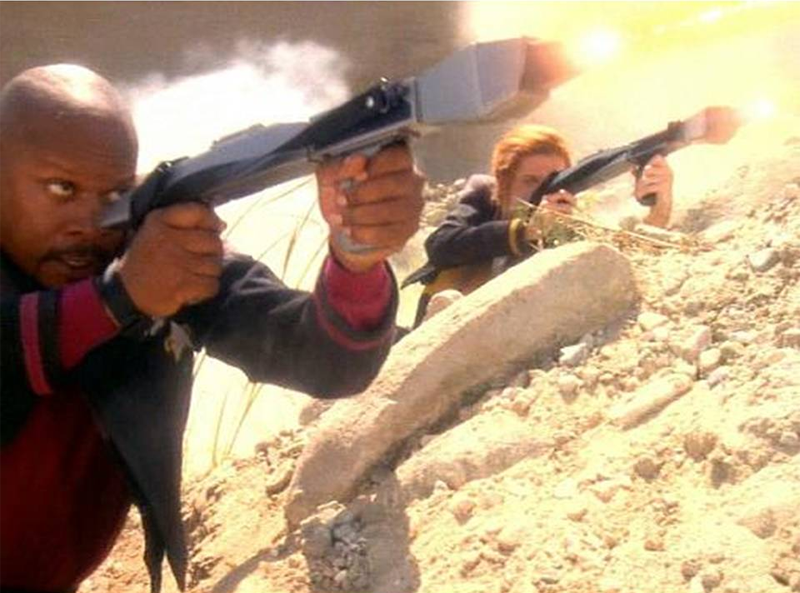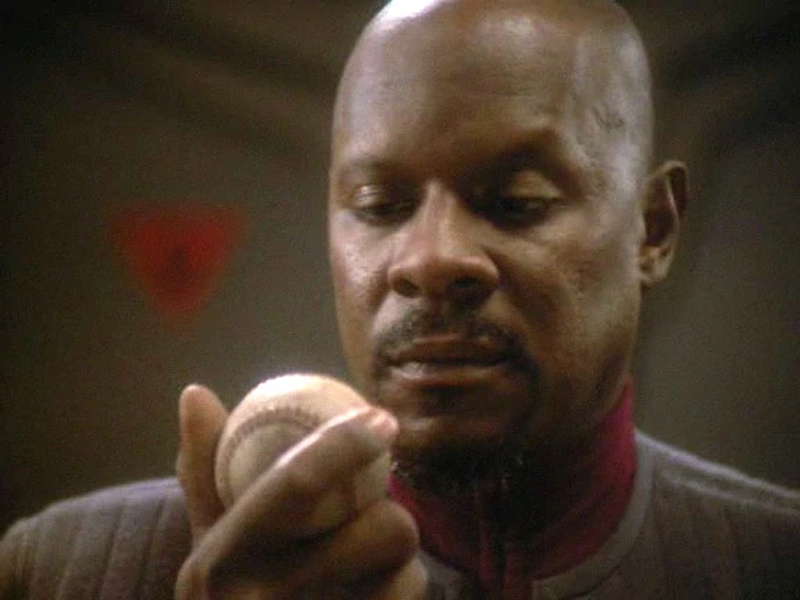25 Years Ago Today, Deep Space Nine's Dominion War Changed Star Trek Forever
- Oops!Something went wrong.Please try again later.
Deep Space Nine revolutionized so much of what could be possible in the world of Star Trek, but it will always be remembered for one of its most transgressive plot threads: the devastating outbreak of the Dominion War, a conflict that, 25 years ago, challenged everything the franchise’s idealistic vision of utopia could stand for.
Although the Dominion had been an ever-growing threat throughout the fifth season of Deep Space Nine, its dramatic finale—and the coming six-part opening to season six that would conclude with “Sacrifice of Angels,” which aired 25 years ago today—brought the conflict its heroes and villains alike were dreading to an explosive, horrifying new level. Across these seven episodes, Star Trek told a serialized arc unlike anything it had done before, even as elements of tried-and-true tropes still weaved in and out of it. Deep Space Nine had been invaded before, even as far back as the climax of the show’s first season, but there is something profound in seeing the Cardassian’s re-occupation of the show’s heart and home, routing the Starfleet personnel aboard it and leaving a whole chunk of the main cast—Odo, Kira, Quark, Garak, Rom, Leeta, and more—under the yoke of enemy occupation.
Read more

Even more profound is that the crisis is not settled immediately. Star Trek has done big threats before, but they’re stories that, at most, are told across two episodes, either back-to-back or bookending and opening two seasons. It takes six episodes, six hours across six weeks of television, for Captain Sisko and the crew of the Defiant to draw up the plans to re-take the station, struggling along the way with the cost of fighting a war on the scale unlike anything Starfleet has seen in centuries up to this point. Across these episodes—“A Time to Stand,” “Rocks and Shoals,” “Sons and Daughters,” “Behind the Lines,” “Favor the Bold,” and “Sacrifice of Angels”—the Defiant’s crew is never given a chance to rest, and neither are the characters left back on Deep Space Nine either. The scope of what this arc does, touching on everything from Worf’s relationship to his son and Klingon honor, climaxing Kira and Dukat’s beguiling, tense relationship, Odo’s divided loyalties to his long lost changeling peoples and his friends, and the very bodies of our Starfleet heroes as they are desperately chased from one wartime crisis to the next, is unthinkable compared to even some of Star Trek’s most enduring epics before this.
The length of the Dominion War arc works just as much on the audience as it does our heroes. We are as uncertain as they are. Is this the week things go back to normal? Is this the week they win, like all good Starfleet heroes do? As things drag on, things get worse for everyone—whether they’re tired or losing hope, or it’s in arcs like Odo’s as we see him conflicted and ultimately straying from helping Kira and his friends resist the Cardassian occupation. Small victories like Worf’s reconciliation with Alexander or the simple fact the Defiant crew makes it through their missions week to week, scrambling to poke holes at the Domnion’s encroaching forces, feel important in the ominous tone that echoes throughout each episode. No one knows if victory is possible, even if you assume that it has to be, masterfully using the length this arc takes to weigh upon the audience.

So when, 25 years ago, we get to “Sacrifice” and are flung into the do-or-die battle for Sisko’s barely-prepared fleet to retake the station, that uncertainty coalesces into an hour of television that is Star Trek’s ultimate epic up to this point. Yes, the ship battle scenes are bold and vast on a scale unseen in the franchise up to this point, but they’re more than their size and spectacle because we have spent five episodes before this leading to this effort—a fleet half the size of the Dominion’s, scrounged together in desperation, being torn apart. Every loss matters not just because it’s what these ships represent—Starfleet thrust into a conflict Trek had never touched in this way before—but because it keeps the tension built up across the episodes before it at a constant fever pitch.
Which is why, ultimately, the deus ex machina of Sisko’s gambit to the Prophets in the Bajoran Wormhole, an equally desperate plea to save not just Deep Space Nine and the Federation’s forces, but Bajor itself, works at the episode and the arc’s moment of relief. It forces Sisko to confront the quasi-religious status he has assumed in Bajoran society as a bridge between the Prophets and Bajor, a status he has otherwise up to this point avoided or tolerated. A heavy price is still paid—personally on the station when Gul Dukat’s daughter Ziyal is killed for aiding the resistance, sending Dukat even further down his villainous path, and on a macro scale when the Federation’s fleet is still decimated even in victory. Everyone on the show is changed by the events of this arc’s conclusion, in fundamental ways that go on to shape their stories for the rest of the series. And of course, so is Deep Space Nine itself, no longer just Star Trek show, but a Star Trek show about wartime, about the kinds of conflict generations of Trek before it had only allowed to exist in the shadows of the past and in worldbuilding, never at the core of its story.

“Sacrifice of Angels” ends the battle, but it doesn’t end the war—but arguably it ends at least some level of Star Trek’s wider optimistic innocence, challenging it to embolden its loftiest of values, and in the process, changing what Star Trek can be forever.
Want more io9 news? Check out when to expect the latest Marvel, Star Wars, and Star Trek releases, what’s next for the DC Universe on film and TV, and everything you need to know about James Cameron’s Avatar: The Way of Water.
More from Gizmodo
The Best Shortcuts On Mac: Snap Windows, Text to Speech, and More
How to Delete Your Twitter Account If Elon Musk Was Your Last Straw
Sign up for Gizmodo's Newsletter. For the latest news, Facebook, Twitter and Instagram.

